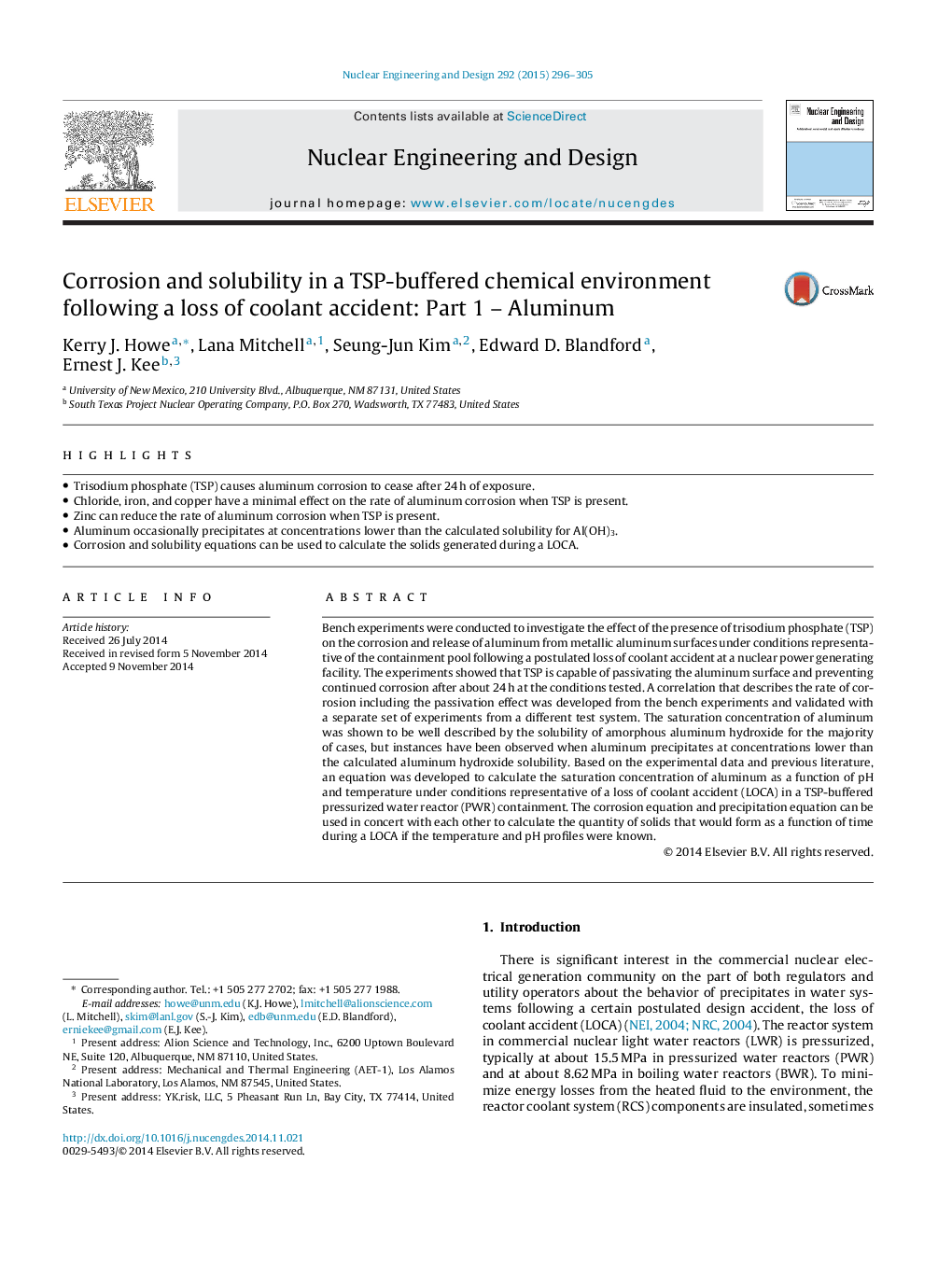| Article ID | Journal | Published Year | Pages | File Type |
|---|---|---|---|---|
| 6761054 | Nuclear Engineering and Design | 2015 | 10 Pages |
Abstract
Bench experiments were conducted to investigate the effect of the presence of trisodium phosphate (TSP) on the corrosion and release of aluminum from metallic aluminum surfaces under conditions representative of the containment pool following a postulated loss of coolant accident at a nuclear power generating facility. The experiments showed that TSP is capable of passivating the aluminum surface and preventing continued corrosion after about 24Â h at the conditions tested. A correlation that describes the rate of corrosion including the passivation effect was developed from the bench experiments and validated with a separate set of experiments from a different test system. The saturation concentration of aluminum was shown to be well described by the solubility of amorphous aluminum hydroxide for the majority of cases, but instances have been observed when aluminum precipitates at concentrations lower than the calculated aluminum hydroxide solubility. Based on the experimental data and previous literature, an equation was developed to calculate the saturation concentration of aluminum as a function of pH and temperature under conditions representative of a loss of coolant accident (LOCA) in a TSP-buffered pressurized water reactor (PWR) containment. The corrosion equation and precipitation equation can be used in concert with each other to calculate the quantity of solids that would form as a function of time during a LOCA if the temperature and pH profiles were known.
Related Topics
Physical Sciences and Engineering
Energy
Energy Engineering and Power Technology
Authors
Kerry J. Howe, Lana Mitchell, Seung-Jun Kim, Edward D. Blandford, Ernest J. Kee,
